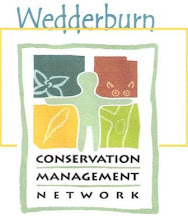
Slowly but surely the high rainfall over the last year and a half is working its miracles throughout the landscape. After a really good year for native grasses and a boom-year for insects, there are now signs the birds are starting to make a comeback as well. There were a lot of bird species suffering in the drought, especially in places where they had to compete for seeds and fruits with introduced and native grazers and browsers. 2008 in particular saw a steep decline in some of the most endangered bird species of the Wedderburn district, the Diamond Firetail (Stagonopleura guttata) and the Hooded Robin (Melanodryas cucullata), but now these birds are slowly coming back. It is too early to tell if they will make a full recovery, but the signs are promising.
Breeding pairs of Hooded Robins have been reported on the North, Northwest and the East side of town, whereas Diamond Firetails have been reported in little flocks in those areas in the district where the native grasses have been allowed to grow big unhindered. On this picture a small group of them is mingling with a flock of Southern Whiteface (Aphelocephala leucopsis), another species that is generally declining in numbers in Victoria. The photo was taken close to Mt Korong and it is assumed the large volume in native grasses in that area is contributing to these birds doing well. A continued rabbit control program at the mount should benefit these species even further as the competition for their food declines.
The diversity of bird life, or avifauna as it is also called, is a particular natural asset of the Wedderburn district. That our most vulnerable bird species appear to be increasing in number is therefore great news.

No comments:
Post a Comment